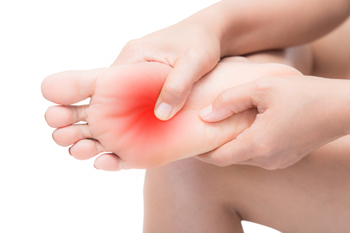Blogs
Certain Foot Conditions May Be Linked to Obesity
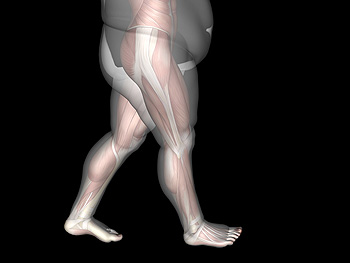 Research has indicated that foot health may be compromised when obesity is a contributing factor. Common foot conditions of obese patients can include sprained ankles, general foot fatigue, blisters, calluses, and athlete’s foot. People who are overweight may find it difficult to exercise, which is helpful in maintaining an optimum weight. If you are struggling with obesity, it is important to purchase larger shoes as this may help to prevent blisters and corns from developing. To help prevent injury to the soft tissues of the foot, select a padded sock to be worn with new shoes. The padded sock helps ensure that the feet don't slip and slide in the shoe and that the toes don't pinch together. It is suggested that obese people who are experiencing various foot conditions visit with a podiatrist who can properly manage related foot ailments.
Research has indicated that foot health may be compromised when obesity is a contributing factor. Common foot conditions of obese patients can include sprained ankles, general foot fatigue, blisters, calluses, and athlete’s foot. People who are overweight may find it difficult to exercise, which is helpful in maintaining an optimum weight. If you are struggling with obesity, it is important to purchase larger shoes as this may help to prevent blisters and corns from developing. To help prevent injury to the soft tissues of the foot, select a padded sock to be worn with new shoes. The padded sock helps ensure that the feet don't slip and slide in the shoe and that the toes don't pinch together. It is suggested that obese people who are experiencing various foot conditions visit with a podiatrist who can properly manage related foot ailments.
The more you weigh, the harder your feet must work to support your body. If you’re an obese individual and are concerned about your feet, contact Dr. Dean D. Hinners from Illinois. Our doctor can provide the care you need to keep you pain-free and on your feet.
Obesity and Your Feet
People who are overweight are putting more pressure on their ankles, knees, and hips as well as their feet. This unfortunately can lead to variety of different issues.
Problems & Complications Stemming from Obesity
- When the body is overweight, it tries to compensate by changing the way that it moves. An obese person may lean forward and put extra weight on the wrong part of the foot. This puts unnecessary stress on the feet.
- Obese people are also more likely to develop type II diabetes which is a condition that causes a lot of foot problems. People with diabetes often don’t feel the cuts and sores that they may have on their feet, which can lead to more complicated and severe issues.
- Plantar fasciitis is another foot condition that can be caused by obesity. Plantar fasciitis is an inflammation of the tissue along the bottom of the foot, which causes pain and stiffness while walking and climbing stairs.
If you have any questions, please feel free to contact one of our offices located in Metropolis and Eldorado, IL . We offer the newest diagnostic and treatment technologies for all your foot care needs.
Read more about How Obesity Affects Your FeetWhat Is Causing My Heel Pain?
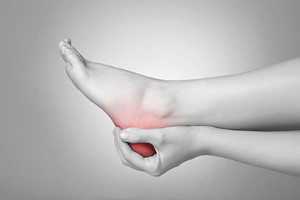 Heel pain when first getting out of bed in the morning, a burning or sharp sensation in the heel, and increased pain while walking, can all be indicative of the foot condition known as plantar fasciitis. Plantar fasciitis can be an uncomfortable foot condition to deal with, especially if it is left untreated. Common causes of this condition can include ill-fitting footwear, poor foot structure, certain exercises like long distance running, and occupations that require you to be on your feet for the majority of the day. Obesity may also lead to the development of plantar fasciitis, due to the excess pressure put on the foot. If you have heel pain, please seek the care of a podiatrist immediately for a proper diagnosis.
Heel pain when first getting out of bed in the morning, a burning or sharp sensation in the heel, and increased pain while walking, can all be indicative of the foot condition known as plantar fasciitis. Plantar fasciitis can be an uncomfortable foot condition to deal with, especially if it is left untreated. Common causes of this condition can include ill-fitting footwear, poor foot structure, certain exercises like long distance running, and occupations that require you to be on your feet for the majority of the day. Obesity may also lead to the development of plantar fasciitis, due to the excess pressure put on the foot. If you have heel pain, please seek the care of a podiatrist immediately for a proper diagnosis.
Plantar fasciitis can be very painful and inconvenient. If you are experiencing heel pain or symptoms of plantar fasciitis, contact Dr. Dean D. Hinners from Illinois. Our doctor can provide the care you need to keep you pain-free and on your feet.
What Is Plantar Fasciitis?
Plantar fasciitis is the inflammation of the thick band of tissue that runs along the bottom of your foot, known as the plantar fascia, and causes mild to severe heel pain.
What Causes Plantar Fasciitis?
- Excessive running
- Non-supportive shoes
- Overpronation
- Repeated stretching and tearing of the plantar fascia
How Can It Be Treated?
- Conservative measures – anti-inflammatories, ice packs, stretching exercises, physical therapy, orthotic devices
- Shockwave therapy – sound waves are sent to the affected area to facilitate healing and are usually used for chronic cases of plantar fasciitis
- Surgery – usually only used as a last resort when all else fails. The plantar fascia can be surgically detached from the heel
While very treatable, plantar fasciitis is definitely not something that should be ignored. Especially in severe cases, speaking to your doctor right away is highly recommended to avoid complications and severe heel pain. Your podiatrist can work with you to provide the appropriate treatment options tailored to your condition.
If you have any questions please feel free to contact one of our offices located in Metropolis and Eldorado, IL . We offer the newest diagnostic and treatment technologies for all your foot and ankle needs.
Read more about Plantar FasciitisRunning vs. Walking Shoes
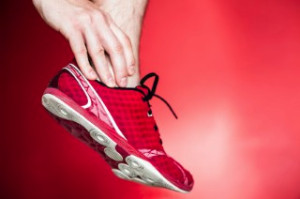 Whether you are a runner or a walker, the shoes that you exercise in should fit your needs. Stores tend to carry more running shoes than walking shoes, and while a runner shouldn't run in walking shoes, a walker may certainly walk in running shoes. That may sound slightly confusing, but the bottom line is that both runners and walkers can benefit from wearing running shoes while exercising as long as they buy shoes that fit their specific activity. Runners should buy shoes that have more cushioning in the heel and forefoot, while walkers generally don’t need extra cushioning in the forefoot and should opt for something more lightweight. Runners need shoes with a higher difference in height from the heel through the toe called the heel drop, while walkers should choose shoes with a heel drop of less than 8 millimeters. For more information on finding the best footwear for your needs, consult with a podiatrist.
Whether you are a runner or a walker, the shoes that you exercise in should fit your needs. Stores tend to carry more running shoes than walking shoes, and while a runner shouldn't run in walking shoes, a walker may certainly walk in running shoes. That may sound slightly confusing, but the bottom line is that both runners and walkers can benefit from wearing running shoes while exercising as long as they buy shoes that fit their specific activity. Runners should buy shoes that have more cushioning in the heel and forefoot, while walkers generally don’t need extra cushioning in the forefoot and should opt for something more lightweight. Runners need shoes with a higher difference in height from the heel through the toe called the heel drop, while walkers should choose shoes with a heel drop of less than 8 millimeters. For more information on finding the best footwear for your needs, consult with a podiatrist.
For more information about walking shoes versus running shoes, consult with Dr. Dean D. Hinners from Illinois. Our doctor can measure your feet to determine what your needs are and help you find an appropriate pair of footwear.
Foot Health: The Differences between Walking & Running Shoes
There are great ways to stay in shape: running and walking are two great exercises to a healthy lifestyle. It is important to know that running shoes and walking shoes are not interchangeable. There is a key difference on how the feet hit the ground when someone is running or walking. This is why one should be aware that a shoe is designed differently for each activity.
You may be asking yourself what the real differences are between walking and running shoes and the answers may shock you.
Differences
Walking doesn’t involve as much stress or impact on the feet as running does. However, this doesn’t mean that you should be any less prepared. When you’re walking, you land on your heels and have your foot roll forward. This rolling motion requires additional support to the feet.
Flexibility – Walking shoes are designed to have soft, flexible soles. This allows the walker to push off easily with each step.
If you have any questions, please feel free to contact one of our offices located in Metropolis and Eldorado, IL . We offer the newest diagnostic and treatment technologies for all your foot care needs.
Read more about Walking Shoes vs. Running ShoesWhere Did This Foot Blister Come From?
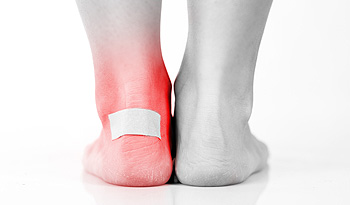 Blisters are small, fluid-filled bumps on the skin that form in response to trauma. The most common cause of blisters on the feet are shoes rubbing repeatedly against the skin. However, there are a variety of other reasons you may have developed a blister. These can include burns or sunburns, frostbite, eczema, allergic reactions, exposure to poison ivy, viruses that cause chicken pox or cold sores, and various diseases or infections. If you have a foot blister and can’t pinpoint the cause, or if your blister is draining pus, red in color, warm or painful, or if you have a fever, diabetes, or circulatory problems, it is strongly recommended that you visit a podiatrist. A podiatrist can examine and treat blisters on the feet and provide the appropriate treatment.
Blisters are small, fluid-filled bumps on the skin that form in response to trauma. The most common cause of blisters on the feet are shoes rubbing repeatedly against the skin. However, there are a variety of other reasons you may have developed a blister. These can include burns or sunburns, frostbite, eczema, allergic reactions, exposure to poison ivy, viruses that cause chicken pox or cold sores, and various diseases or infections. If you have a foot blister and can’t pinpoint the cause, or if your blister is draining pus, red in color, warm or painful, or if you have a fever, diabetes, or circulatory problems, it is strongly recommended that you visit a podiatrist. A podiatrist can examine and treat blisters on the feet and provide the appropriate treatment.
Blisters are prone to making everyday activities extremely uncomfortable. If your feet are hurting, contact Dr. Dean D. Hinners of Illinois. Our doctor can provide the care you need to keep you pain-free and on your feet.
Foot Blisters
Foot blisters develop as a result of constantly wearing tight or ill-fitting footwear. This happens due to the constant rubbing from the shoe, which can often lead to pain.
What Are Foot Blisters?
A foot blister is a small fluid-filled pocket that forms on the upper-most layer of the skin. Blisters are filled with clear fluid and can lead to blood drainage or pus if the area becomes infected.
How Do Blisters Form?
Blisters on the feet are often the result of constant friction of skin and material, usually by shoe rubbing. Walking in sandals, boots, or shoes that don’t fit properly for long periods of time can result in a blister. Having consistent foot moisture and humidity can easily lead to blister formation.
Prevention & Treatment
It is important to properly care for the affected area in order to prevent infection and ease the pain. Do not lance the blister and use a Band-Aid to provide pain relief. Also, be sure to keep your feet dry and wear proper fitting shoes. If you see blood or pus in a blister, seek assistance from a podiatrist.
If you have any questions, please feel free to contact one of our offices located in Metropolis and Eldorado, IL . We offer the newest diagnostic and treatment technologies for all your foot care needs.
Read more about BlistersDo Your Child's Feet Hurt?
How Do I Know If I Have a Plantar Wart?
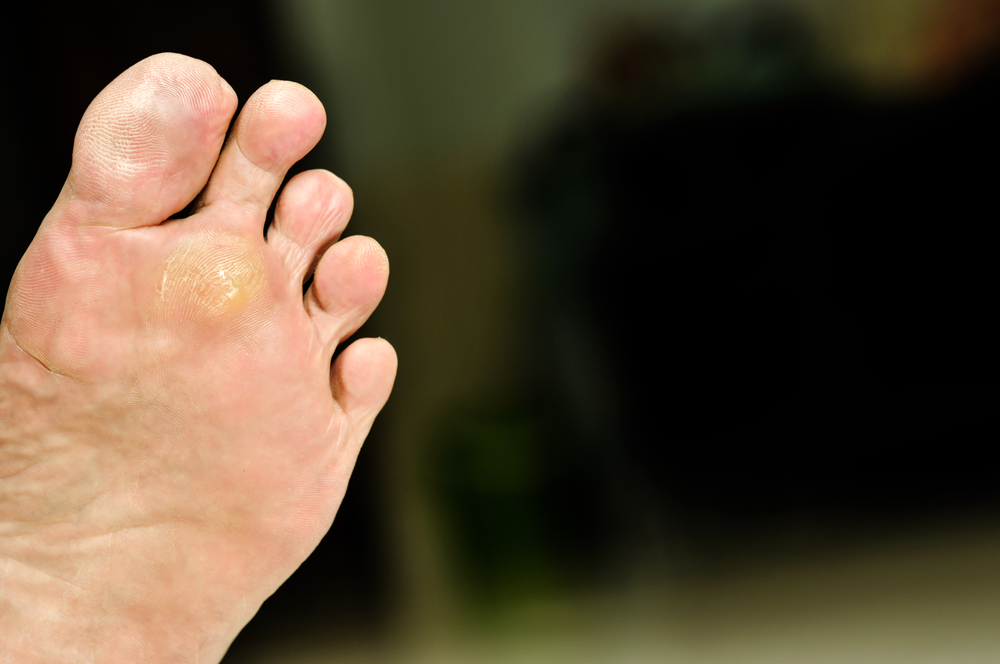 Plantar warts are small, rough, fleshy growths that can appear on the bottom of the foot. They are caused by the virus known as HPV and enter the body through a cut or break in the skin. Plantar warts typically appear at the base of the toes or on the heel. Their appearance is characterized by black pinpoints and a grainy texture. Plantar warts may cause pain when walking or standing, and can sometimes grow inwards, forming a callus. The wart might also cause lesions that can change the normal lines and ridges of the skin on the bottom of the foot. If you think you may have a plantar wart, it is suggested that you seek the care of a podiatrist.
Plantar warts are small, rough, fleshy growths that can appear on the bottom of the foot. They are caused by the virus known as HPV and enter the body through a cut or break in the skin. Plantar warts typically appear at the base of the toes or on the heel. Their appearance is characterized by black pinpoints and a grainy texture. Plantar warts may cause pain when walking or standing, and can sometimes grow inwards, forming a callus. The wart might also cause lesions that can change the normal lines and ridges of the skin on the bottom of the foot. If you think you may have a plantar wart, it is suggested that you seek the care of a podiatrist.
Plantar warts can be very uncomfortable. If you need your feet checked, contact Dr. Dean D. Hinners from Illinois. Our doctor will assist you with all of your foot and ankle needs.
About Plantar Warts
Plantar warts are the result of HPV, or human papillomavirus, getting into open wounds on the feet. They are mostly found on the heels or balls of the feet.
While plantar warts are generally harmless, those experiencing excessive pain or those suffering from diabetes or a compromised immune system require immediate medical care. Plantar warts are easily diagnosed, usually through scraping off a bit of rough skin or by getting a biopsy.
Symptoms
- Lesions on the bottom of your feet, usually rough and grainy
- Hard or thick callused spots
- Wart seeds, which are small clotted blood vessels that look like little black spots
- Pain, discomfort, or tenderness of your feet when walking or standing
Treatment
- Freezing
- Electric tool removal
- Laser Treatment
- Topical Creams (prescription only)
- Over-the-counter medications
To help prevent developing plantar warts, avoid walking barefoot over abrasive surfaces that can cause cuts or wounds for HPV to get into. Avoiding direct contact with other warts, as well as not picking or rubbing existing warts, can help prevent the further spread of plantar warts. However, if you think you have developed plantar warts, speak to your podiatrist. He or she can diagnose the warts on your feet and recommend the appropriate treatment options.
If you have any questions please feel free to contact one of our offices located in Metropolis and Eldorado, IL . We offer the newest diagnostic and treatment technologies for all your foot and ankle needs.
Read more about What Are Plantar Warts?Is Toenail Fungus Contagious?
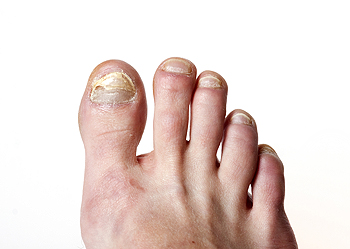 Research has indicated that toenail fungus rarely affects children, but can develop as the aging process occurs. It occurs as a result of the fungus entering the toenail through a small crack in the nail, and will gradually spread when shoes and socks are worn throughout the day. Some of the symptoms that are associated with this ailment can consist of the toenails becoming thick and yellowed, and in severe cases, the nail may lift off of the nail bed. This type of fungus lives and thrives in warm and moist environments, and is often found in public swimming pools, showers room floors, and surrounding areas. It is helpful to wear appropriate shoes while in these types of places, as this may help to reduce the risk of spreading toenail fungus. Toenail fungus is considered to be contagious, and it is beneficial to refrain from sharing towels, socks and shoes. If you are afflicted with this condition, it is suggested that you seek the counsel of a podiatrist who can offer you effective treatment options.
Research has indicated that toenail fungus rarely affects children, but can develop as the aging process occurs. It occurs as a result of the fungus entering the toenail through a small crack in the nail, and will gradually spread when shoes and socks are worn throughout the day. Some of the symptoms that are associated with this ailment can consist of the toenails becoming thick and yellowed, and in severe cases, the nail may lift off of the nail bed. This type of fungus lives and thrives in warm and moist environments, and is often found in public swimming pools, showers room floors, and surrounding areas. It is helpful to wear appropriate shoes while in these types of places, as this may help to reduce the risk of spreading toenail fungus. Toenail fungus is considered to be contagious, and it is beneficial to refrain from sharing towels, socks and shoes. If you are afflicted with this condition, it is suggested that you seek the counsel of a podiatrist who can offer you effective treatment options.
For more information about treatment, contact Dr. Dean D. Hinners of Illinois. Our doctor can provide the care you need to keep you pain-free and on your feet.
Toenail Fungus Treatment
Toenail fungus is a condition that affects many people and can be especially hard to get rid of. Fortunately, there are several methods to go about treating and avoiding it.
Antifungals & Deterrence
Oral antifungal medicine has been shown to be effective in many cases. It is important to consult with a podiatrist to determine the proper regiment for you, or potentially explore other options.
Applying foot powder on the feet and shoes helps keep the feet free of moisture and sweat.
Sandals or open toed shoes – Wearing these will allow air movement and help keep feet dry. They also expose your feet to light, which fungus cannot tolerate. Socks with moisture wicking material also help as well.
If you have any questions please feel free to contact one of our offices located in Metropolis and Eldorado, IL . We offer the newest diagnostic tools and technology to treat your foot and ankle needs.
Read more about Treating Toenail FungusFighting Fungal Nails
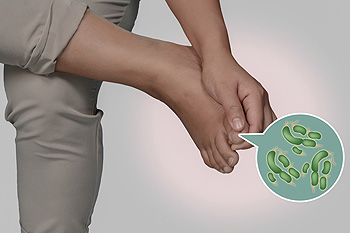 It’s a hot summer day and you’re getting ready to relax by the pool. You reach for your shoes - and pick out a nice pair of sneakers. Wait, sneakers at the pool? If you frequently find yourself making uncomfortable footwear decisions due to the dry, cracked, yellowing, or crumbling appearance of your toenails, you might have onychomycosis, a fungal infection of the nails. Fungal nail infections, while often a source of embarrassment, are actually quite common, affecting 36 million people in the United States, for example. These infections are notoriously difficult to treat and may carry additional health risks for people who have diabetes or immune system disorders. One potential treatment for fungal toenails is laser therapy, in which the affected nails are exposed to a beam of light that kills the fungus hiding below the nails’ surface. For the majority of patients, laser treatment is quick, painless, and effective. To learn more about laser therapy for treatment of fungal nail infections, speak with your podiatrist today.
It’s a hot summer day and you’re getting ready to relax by the pool. You reach for your shoes - and pick out a nice pair of sneakers. Wait, sneakers at the pool? If you frequently find yourself making uncomfortable footwear decisions due to the dry, cracked, yellowing, or crumbling appearance of your toenails, you might have onychomycosis, a fungal infection of the nails. Fungal nail infections, while often a source of embarrassment, are actually quite common, affecting 36 million people in the United States, for example. These infections are notoriously difficult to treat and may carry additional health risks for people who have diabetes or immune system disorders. One potential treatment for fungal toenails is laser therapy, in which the affected nails are exposed to a beam of light that kills the fungus hiding below the nails’ surface. For the majority of patients, laser treatment is quick, painless, and effective. To learn more about laser therapy for treatment of fungal nail infections, speak with your podiatrist today.
Laser treatment can be an effective way to get rid of toenail fungus. If you have any questions about laser treatment, consult with Dr. Dean D. Hinners from Illinois. Our doctor will assess your condition and provide you with quality treatment for fungal nails.
What Are Toenail Fungal Infections?
Onychomycosis, or fungal infection of the nail, is a relatively common and non-serious condition. Around 10 percent of U.S. citizens are afflicted with fungal nails. Common forms of fungus that infect the nail include dermatophytes, yeasts, and molds.
Symptoms of Toenail Fungal Infections Include:
- Nail thickening
- Brittleness of the nail
- Discoloration of the nail
Diagnosis for Fungal Nails
Fungal infections are diagnosed by fungal culture and microscopy. This will rule out any other conditions such as nail trauma, psoriasis, lichen planus, and onychogryphosis.
What Is Laser Treatment?
Laser treatment is a non-invasive, safe, quick, and painless procedure that uses the heat from a laser to kill fungus in the nail. Each infected nail is targeted with a laser for several minutes. The treatment is usually utilized several different times over a select period. During this time, a podiatrist will keep an eye on the infection.
If you have any questions, please feel free to contact one of our offices located in Metropolis and Eldorado, IL . We offer the newest diagnostic and treatment technologies for all your foot care needs.
Read more about Laser Treatment for Fungal NailsPossible Causes and Types of Foot Pain
The feet are considered to be the foundation of the body, and can endure numerous aches and pains as a result of bearing the weight of the body. A common type of foot pain comes from developing a condition known as plantar fasciitis. This ailment affects the plantar fascia, which is the band of tissue that connects the heel to the toes. The discomfort is often felt in the heel and may feel its worst upon arising in the morning. Additionally, heel pain can be associated with a heel spur. This is described as a small growth that extends from the heel, and can develop due to repetitive stress that can come from frequently participating in running and jumping activities. A stress fracture is a hairline crack in one of the bones in the foot and can cause severe pain and discomfort. This type of foot injury gradually develops. Common symptoms may include a stabbing pain and general discomfort in the part of the foot that is affected. If you have any type of foot pain it is strongly suggested that you consult with a podiatrist as soon as possible. A podiatrist can properly diagnose your condition and offer you the best treatment options.
Foot Pain
Foot pain can be extremely painful and debilitating. If you have a foot pain, consult with Dr. Dean D. Hinners from Illinois. Our doctor will assess your condition and provide you with quality foot and ankle treatment.
Causes
Foot pain is a very broad condition that could be caused by one or more ailments. The most common include:
- Bunions
- Hammertoes
- Plantar Fasciitis
- Bone Spurs
- Corns
- Tarsal Tunnel Syndrome
- Ingrown Toenails
- Arthritis (such as Gout, Rheumatoid, and Osteoarthritis)
- Flat Feet
- Injury (from stress fractures, broken toe, foot, ankle, Achilles tendon ruptures, and sprains)
- And more
Diagnosis
To figure out the cause of foot pain, podiatrists utilize several different methods. This can range from simple visual inspections and sensation tests to X-rays and MRI scans. Prior medical history, family medical history, and any recent physical traumatic events will all be taken into consideration for a proper diagnosis.
Treatment
Treatment depends upon the cause of the foot pain. Whether it is resting, staying off the foot, or having surgery; podiatrists have a number of treatment options available for foot pain.
If you have any questions, please feel free to contact one of our offices located in Metropolis and Eldorado, IL . We offer the newest diagnostic and treatment technologies for all your foot care needs.
Read more about Foot PainWounds That Don't Heal Need to Be Checked
More...
Treatments for Sweaty Feet
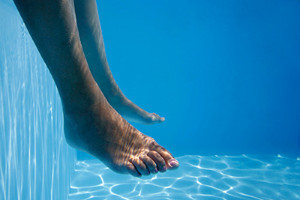 We all tend to sweat more in the summer months. However, if you find that your feet are often so sweaty that your shoes slip right off, you may have plantar hyperhidrosis. Plantar hyperhidrosis, or excessive sweating of the feet, is a medical condition that affects about 3% of the population. This problem can be embarrassing, but fortunately, there are effective treatments, including application of an antiperspirant, oral medications, and botox injections into the foot. Another proven treatment is iontophoresis, in which the foot is submerged in water that has a low-level electrical current running through it. The electrical current charges ions in the water, which get into the sweat glands in your feet and disrupt their ability to make sweat, ultimately leading to healthy, dryer feet. If you find yourself sweating excessively from your feet, consult with a podiatrist, who can help you select the treatment that is right for you.
We all tend to sweat more in the summer months. However, if you find that your feet are often so sweaty that your shoes slip right off, you may have plantar hyperhidrosis. Plantar hyperhidrosis, or excessive sweating of the feet, is a medical condition that affects about 3% of the population. This problem can be embarrassing, but fortunately, there are effective treatments, including application of an antiperspirant, oral medications, and botox injections into the foot. Another proven treatment is iontophoresis, in which the foot is submerged in water that has a low-level electrical current running through it. The electrical current charges ions in the water, which get into the sweat glands in your feet and disrupt their ability to make sweat, ultimately leading to healthy, dryer feet. If you find yourself sweating excessively from your feet, consult with a podiatrist, who can help you select the treatment that is right for you.
If you are suffering from hyperhidrosis contact Dr. Dean D. Hinners of Illinois. Our doctor can provide the care you need to attend to all of your foot and ankle needs.
Hyperhidrosis of the Feet
Hyperhidrosis is a rare disorder that can cause people to have excessive sweating of their feet. This can usually occur all on its own without rigorous activity involved. People who suffer from hyperhidrosis may also experience sweaty palms.
Although it is said that sweating is a healthy process meant to cool down the body temperature and to maintain a proper internal temperature, hyperhidrosis may prove to be a huge hindrance on a person’s everyday life.
Plantar hyperhidrosis is considered to be the main form of hyperhidrosis. Secondary hyperhidrosis can refer to sweating that occurs in areas other than the feet or hands and armpits. Often this may be a sign of it being related to another medical condition such as menopause, hyperthyroidism and even Parkinson’s disease.
In order to alleviate this condition, it is important to see your doctor so that they may prescribe the necessary medications so that you can begin to live a normal life again. If this is left untreated, it is said that it will persist throughout an individual’s life.
A last resort approach would be surgery, but it is best to speak with your doctor to find out what may be the best treatment for you.
If you have any questions please feel free to contact one of our offices located in Metropolis and Eldorado, IL . We offer the newest diagnostic and treatment technologies for all your foot and ankle needs.
Read more about Hyperhidrosis of the FeetCauses of Heel Pain
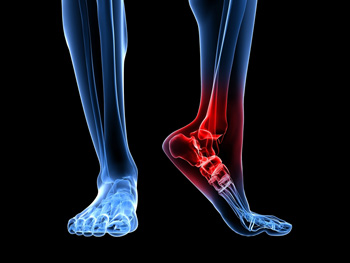 Heel pain can vary in severity and type. Since the heel is the first part of the foot to make contact with the ground, it absorbs the full force of impact and bears the most weight while walking. One of the most common causes of heel pain is plantar fasciitis. This occurs when the ligament that attaches the heel to the ball of the foot, known as the plantar fascia, becomes irritated. Heel spurs, which are bone growths at the bottom of the heel, can also cause heel pain. Other issues that can cause heel pain include repetitive stress or shock to the heel, standing for too long, or osteoarthritis. If you are experiencing heel pain, it is important to consult with a podiatrist to help diagnose and treat the painful condition.
Heel pain can vary in severity and type. Since the heel is the first part of the foot to make contact with the ground, it absorbs the full force of impact and bears the most weight while walking. One of the most common causes of heel pain is plantar fasciitis. This occurs when the ligament that attaches the heel to the ball of the foot, known as the plantar fascia, becomes irritated. Heel spurs, which are bone growths at the bottom of the heel, can also cause heel pain. Other issues that can cause heel pain include repetitive stress or shock to the heel, standing for too long, or osteoarthritis. If you are experiencing heel pain, it is important to consult with a podiatrist to help diagnose and treat the painful condition.
Many people suffer from bouts of heel pain. For more information, contact Dr. Dean D. Hinners of Illinois. Our doctor can provide the care you need to keep you pain-free and on your feet.
Causes of Heel Pain
Heel pain is often associated with plantar fasciitis. The plantar fascia is a band of tissues that extends along the bottom of the foot. A rip or tear in this ligament can cause inflammation of the tissue.
Achilles tendonitis is another cause of heel pain. Inflammation of the Achilles tendon will cause pain from fractures and muscle tearing. Lack of flexibility is also another symptom.
Heel spurs are another cause of pain. When the tissues of the plantar fascia undergo a great deal of stress, it can lead to ligament separation from the heel bone, causing heel spurs.
Why Might Heel Pain Occur?
- Wearing ill-fitting shoes
- Wearing non-supportive shoes
- Weight change
- Excessive running
Treatments
Heel pain should be treated as soon as possible for immediate results. Keeping your feet in a stress-free environment will help. If you suffer from Achilles tendonitis or plantar fasciitis, applying ice will reduce the swelling. Stretching before an exercise like running will help the muscles. Using all these tips will help make heel pain a condition of the past.
If you have any questions please contact one of our offices located in Metropolis and Eldorado, IL . We offer the newest diagnostic and treatment technologies for all your foot and ankle needs.
Read more about Heel PainNumbing Sensation in the Feet and Toes
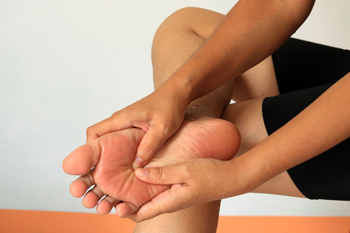 Experiencing a numbing sensation in the feet and toes can be an indicator of Peripheral Artery Disease, also known as PAD. This condition typically develops due to a build-up of fatty deposits on the walls of the arteries. The numbing sensation that is often associated with this condition can be incredibly dangerous, as it can prevent patients from feeling or recognizing injuries to the feet. Scrapes and wounds that are left undetected may lead to an infection. Along with experiencing a numbness in the lower extremity regions, patients with PAD have also noted experiencing symptoms such as coldness and discoloration of the legs and feet. In order to safely treat PAD, please seek the professional care of a podiatrist.
Experiencing a numbing sensation in the feet and toes can be an indicator of Peripheral Artery Disease, also known as PAD. This condition typically develops due to a build-up of fatty deposits on the walls of the arteries. The numbing sensation that is often associated with this condition can be incredibly dangerous, as it can prevent patients from feeling or recognizing injuries to the feet. Scrapes and wounds that are left undetected may lead to an infection. Along with experiencing a numbness in the lower extremity regions, patients with PAD have also noted experiencing symptoms such as coldness and discoloration of the legs and feet. In order to safely treat PAD, please seek the professional care of a podiatrist.
Peripheral artery disease can pose a serious risk to your health. It can increase the risk of stroke and heart attack. If you have symptoms of peripheral artery disease, consult with Dr. Dean D. Hinners from Illinois. Our doctor will assess your condition and provide you with quality foot and ankle treatment.
Peripheral artery disease (PAD) is when arteries are constricted due to plaque (fatty deposits) build-up. This results in less blood flow to the legs and other extremities. The main cause of PAD is atherosclerosis, in which plaque builds up in the arteries.
Symptoms
Symptoms of PAD include:
- Claudication (leg pain from walking)
- Numbness in legs
- Decrease in growth of leg hair and toenails
- Paleness of the skin
- Erectile dysfunction
- Sores and wounds on legs and feet that won’t heal
- Coldness in one leg
It is important to note that a majority of individuals never show any symptoms of PAD.
Diagnosis
While PAD occurs in the legs and arteries, Podiatrists can diagnose PAD. Podiatrists utilize a test called an ankle-brachial index (ABI). An ABI test compares blood pressure in your arm to you ankle to see if any abnormality occurs. Ultrasound and imaging devices may also be used.
Treatment
Fortunately, lifestyle changes such as maintaining a healthy diet, exercising, managing cholesterol and blood sugar levels, and quitting smoking, can all treat PAD. Medications that prevent clots from occurring can be prescribed. Finally, in some cases, surgery may be recommended.
If you have any questions, please feel free to contact one of our offices located in Metropolis and Eldorado, IL . We offer the newest diagnostic and treatment technologies for all your foot care needs.
Read more about Peripheral Artery DiseaseFoot Stretches May Prevent Muscle Cramps
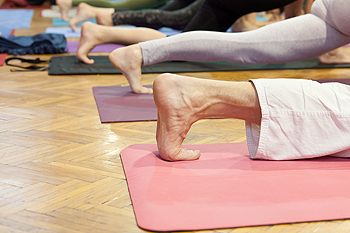 There are specific stretches that can be performed which can benefit the feet and ankles. Calf stretches are helpful in stretching the Achilles tendon, which is located at the back of the leg. Its purpose is to connect the heel to the calf muscles, and stretching this tendon will help to keep it flexible. This can be accomplished by standing on a step, and gently lowering one heel at a time. The top of the foot can be strengthened by picking up marbles with the toes, and slowly releasing them. Performing a towel pull is an effective stretch to keep the overall foot strong. This is done by sitting down with your legs in front of you, putting a towel across the bottom of your feet, and pulling it toward you. When the proper foot stretches are frequently practiced, muscle cramps may possibly be prevented. If you would like additional information about stretching exercises for the feet, please consult with a podiatrist.
There are specific stretches that can be performed which can benefit the feet and ankles. Calf stretches are helpful in stretching the Achilles tendon, which is located at the back of the leg. Its purpose is to connect the heel to the calf muscles, and stretching this tendon will help to keep it flexible. This can be accomplished by standing on a step, and gently lowering one heel at a time. The top of the foot can be strengthened by picking up marbles with the toes, and slowly releasing them. Performing a towel pull is an effective stretch to keep the overall foot strong. This is done by sitting down with your legs in front of you, putting a towel across the bottom of your feet, and pulling it toward you. When the proper foot stretches are frequently practiced, muscle cramps may possibly be prevented. If you would like additional information about stretching exercises for the feet, please consult with a podiatrist.
Stretching the feet is a great way to prevent injuries. If you have any concerns with your feet consult with Dr. Dean D. Hinners from Illinois. Our doctor will assess your condition and provide you with quality foot and ankle treatment.
Stretching the Feet
Being the backbone of the body, the feet carry your entire weight and can easily become overexerted, causing cramps and pain. As with any body part, stretching your feet can serve many benefits. From increasing flexibility to even providing some pain relief, be sure to give your feet a stretch from time to time. This is especially important for athletes or anyone performing aerobic exercises, but anyone experiencing foot pain or is on their feet constantly should also engage in this practice.
Great ways to stretch your feet:
- Crossing one leg over the others and carefully pull your toes back. Do 10-20 repetitions and repeat the process for each foot
- Face a wall with your arms out and hands flat against the wall. Step back with one foot and keep it flat on the floor while moving the other leg forward. Lean towards the wall until you feel a stretch. Hold for 30 seconds and perform 10 repetitions for each foot
- Be sure not to overextend or push your limbs too hard or you could risk pulling or straining your muscle
Individuals who tend to their feet by regular stretching every day should be able to minimize foot pain and prevent new problems from arising.
If you have any questions, please feel free to contact one of our offices located in Metropolis and Eldorado, IL . We offer the newest diagnostic and treatment technologies for all your foot care needs.
Read more about Stretching Your Feet
